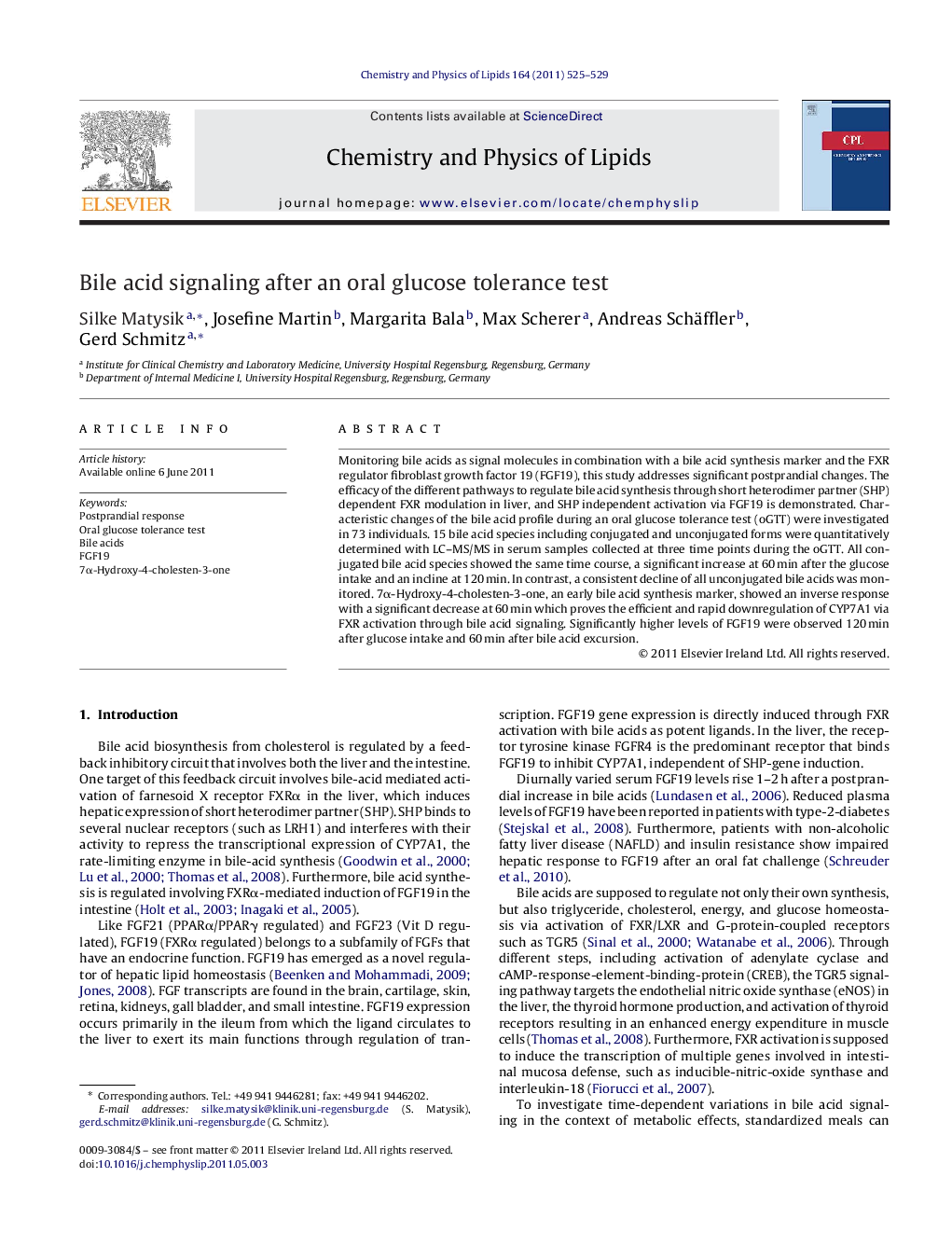| Article ID | Journal | Published Year | Pages | File Type |
|---|---|---|---|---|
| 1253374 | Chemistry and Physics of Lipids | 2011 | 5 Pages |
Monitoring bile acids as signal molecules in combination with a bile acid synthesis marker and the FXR regulator fibroblast growth factor 19 (FGF19), this study addresses significant postprandial changes. The efficacy of the different pathways to regulate bile acid synthesis through short heterodimer partner (SHP) dependent FXR modulation in liver, and SHP independent activation via FGF19 is demonstrated. Characteristic changes of the bile acid profile during an oral glucose tolerance test (oGTT) were investigated in 73 individuals. 15 bile acid species including conjugated and unconjugated forms were quantitatively determined with LC–MS/MS in serum samples collected at three time points during the oGTT. All conjugated bile acid species showed the same time course, a significant increase at 60 min after the glucose intake and an incline at 120 min. In contrast, a consistent decline of all unconjugated bile acids was monitored. 7α-Hydroxy-4-cholesten-3-one, an early bile acid synthesis marker, showed an inverse response with a significant decrease at 60 min which proves the efficient and rapid downregulation of CYP7A1 via FXR activation through bile acid signaling. Significantly higher levels of FGF19 were observed 120 min after glucose intake and 60 min after bile acid excursion.
► Conjugated bile acids increase after glucose intake. ► Unconjugated bile acids decrease after glucose intake. ► Bile acid synthesis is repressed. ► FGF19 is elevated 2 h after glucose intake.
